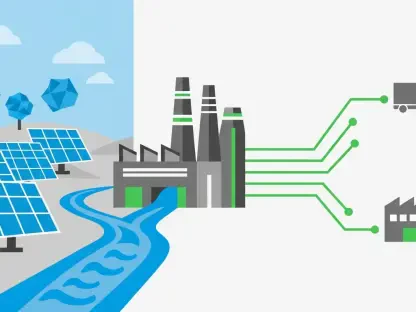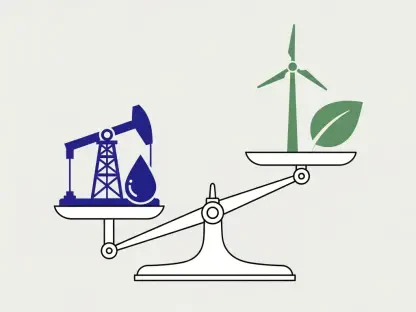In a landmark move aimed at bolstering the reliability and resilience of Texas’s electrical grid, the Public Utility Commission of Texas (PUCT) has given the green light to Oncor Electric Delivery’s expansive $3 billion system resiliency plan. This decision marks a significant step towards enhancing the state’s grid infrastructure, focusing on accelerating upgrades, mitigating severe weather outages, and addressing both physical and cybersecurity threats, including the ever-present risk of wildfires. The approval follows recent legislative changes that empower utilities to submit plans designed to fortify the grid, setting a precedent for other utilities in the state.
Legislative Backing and Regulatory Approval
Texas lawmakers have recently enacted legislation that allows utilities to propose resiliency plans aimed at strengthening the grid’s reliability amidst increasing challenges. Oncor’s proposal is the first to receive such approval from the state’s regulatory body, setting an important precedent for other utility companies in Texas. Presently, additional plans from major utilities like American Electric Power Texas (AEP), Texas-New Mexico Power Co., and Entergy Texas are also under review by the PUCT, indicating a broad movement towards improving grid resilience across the state.
Throughout the approval process, extensive collaboration took place among various stakeholders, including PUCT legal staff, consumer groups, and representatives from several cities. This cooperative effort was instrumental in reaching a settlement agreement, highlighting the importance of a data-driven and transparent process. Commissioner Lori Cobos emphasized the significance of this collaborative effort, noting that the careful and inclusive planning process was a testament to the dedication and thoroughness involved in crafting the plan.
Key Components of Oncor’s Resiliency Plan
Oncor’s resiliency plan is underpinned by an extensive analysis of two decades’ worth of weather and grid data, leading to the development of several crucial strategies aimed at modernizing the existing infrastructure. These include enhancing vegetation management near power lines and significantly ramping up automation investments. By implementing these initiatives, Oncor aims to substantially reduce the number of outage minutes, thereby increasing the system’s overall efficiency, particularly during extreme weather events.
One of the focal points of the plan is the significant emphasis on boosting automation. Oncor CEO Allen Nye explained that these improvements are designed to proactively address and mitigate potential outages, while also accelerating the recovery process from any disruptions. Through comprehensive modernization of the infrastructure and increased automation, Oncor seeks to create a more resilient and reliable grid, better equipped to handle the challenges posed by severe weather and other risks.
Targeted Investments and Modernization Efforts
To optimize its electricity distribution system, Oncor’s plan includes several targeted investments aimed at modernizing and hardening both overhead and underground systems. This involves the enhancement of existing overhead systems, such as poles and crossarms, while also upgrading underground infrastructure with technologies like switchgear automation. Furthermore, the plan is set to optimize distribution automation by adding new ties, increasing system capacity, and implementing intelligent switching mechanisms to better manage and distribute the electrical load.
A particular highlight of the plan is the concept of “sectionalization,” which involves creating additional ties between feeders from different substations to enhance system flexibility. This technological capability is crucial for efficiently managing outages and speeding up the recovery process. Oncor’s vice president of regulatory policy, Brian Lloyd, emphasized the importance of implementing sectionalization technology in both new and older parts of the grid. This ensures that even existing, older infrastructure can meet modern standards, thereby significantly improving the overall performance and resilience of the grid system.
Enhancing Cybersecurity and Physical Infrastructure
In addition to the physical upgrades, Oncor’s resiliency plan places a significant focus on enhancing cybersecurity measures to safeguard the digital infrastructure. Given the growing threats in the cyber realm, the plan incorporates robust measures designed to protect against evolving cyber threats, ensuring the continuous security and reliability of the grid. These enhancements are critical, as the digital aspects of the grid become increasingly integral to its overall operation and resilience.
Beyond the distribution improvements, Oncor is also planning to bolster its transmission system to meet the growing demand for electricity. The PUCT has recently approved an electric reliability plan specifically for the Permian Basin region, driven by a substantial increase in electricity demand from industries like oil and gas, data centers, and other commercial entities. This plan includes around $4 billion in immediate local projects and an additional $9 billion in prospective projects, contingent on regulatory approval for high-capacity 765-kV transmission lines. Oncor expects to capture a significant share of these new capital investments due to its existing operations in the Permian Basin and alignment with the recommendations of the Electric Reliability Council of Texas (ERCOT).
Future-Proofing Texas’s Energy Infrastructure
In a landmark decision aimed at strengthening the reliability and resilience of Texas’s electrical grid, the Public Utility Commission of Texas (PUCT) has approved Oncor Electric Delivery’s extensive $3 billion system resiliency plan. This marks a significant advancement in the state’s efforts to upgrade its grid infrastructure. The plan focuses on speeding up infrastructure upgrades, reducing outages caused by severe weather, and managing both physical and cybersecurity threats, such as the persistent risk of wildfires. This approval comes on the heels of recent legislative changes that allow utilities to present detailed plans specifically designed to enhance grid stability. By setting a precedent with this decision, the PUCT’s approval could inspire other utilities across the state to develop similar initiatives aimed at making Texas’s electrical grid more robust. The goal is to create a more reliable and secure grid system that can better withstand various challenges, ensuring continuous service for all residents and businesses.









